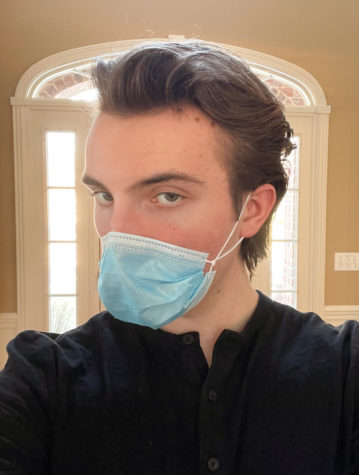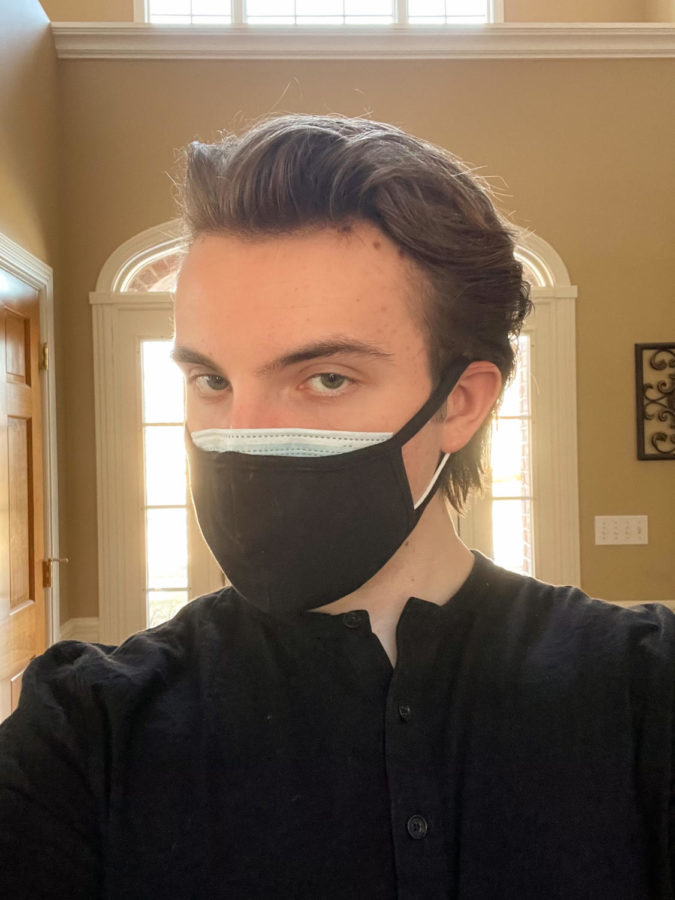In the fight against COVID-19, two masks are better than one, says the Centers for Disease Control and Prevention (CDC).
On February 10, the CDC published a report detailing the results of a series of experiments that aimed to quantify the effectiveness of different mask options. One of the mask options tested was a surgical mask worn under a cloth mask–a practice known as “double-masking.”
In the trials, researchers fitted the masks onto two mannequin heads spaced a few feet apart and used a mouthpiece to simulate a cough from one of the heads. The researchers then measured how many of the particles from the cough penetrated the other mannequin’s mask and got into its mouth.
The researchers found that when the cougher and the receiver both wore double-masks, the receiver’s exposure to potentially infectious aerosols was reduced by about 95% (as compared to what the exposure was when neither wore any mask at all). The same effectiveness was demonstrated by a surgical mask worn by knotting the ear loops and then tucking and flattening any extra material close to the face. In contrast, when each head wore a single unaltered medical procedure mask, the receiver was only blocked from about 56% of the cough particles.

Why is the double mask so much more effective than the lone surgical mask? The answer is twofold.
First, having more layers between you and the outside world means aerosols and droplets potentially carrying COVID-19 will have to get through more material before they can enter your body. Each successive layer reduces the chance any one particle can penetrate all the way through to your mouth or nose.
“Think of it like a furnace filter, which has multiple layers to trap the dust and dandruff that gets past the first [and second] layer,” said Laura Barrett, Director of Disease Prevention at the Kane County Health Department. “The same thing is going on when you wear multiple masks.”
Second, wearing a cloth mask on top of a surgical mask makes the surgical mask fit more tightly to your face. A tighter fit means there are fewer gaps around the edges where respiratory droplets potentially carrying the virus can enter.
The CDC researchers concluded in their report that “the extent to which [surgical masks on their own] reduce exhalation and inhalation of particles in the aerosol range varies substantially, in part because air can leak around their edges, especially through the side gaps.”
Barrett echoed this sentiment. “With a mask, you should always make sure it fits snug around the top of your nose and jawline. That way, you’re truly breathing in and out through the mask itself, not through gaps around the sides,” she said.
The CDC places much emphasis on this “fit” factor in their updated mask recommendations, which are based on the results of the February 10 report and can read in full here: Improve the Fit and Filtration of Your Mask to Reduce the Spread of COVID-19.

The new guidelines state that wearing a double mask (or another mask option with heightened protection) is recommended whenever you are in close contact with people who do not live with you. These situations might include visiting the grocery store, going to the doctor’s office, or working at a job where it is difficult to maintain social distancing.
Barrett listed attending high school as another instance in which double masking is likely a good idea. “Look at your classes at school. If you’re one of six kids in a classroom, and the classroom is 40 feet by 50 feet, you’ve got enough room to maintain social distancing. [But] it’s really difficult to stay six feet away from other people if you’re in the same size space with 40 other kids. And whenever you’re less than six feet away from others for more than 15 minutes, your risk increases. So that might be one time you want to wear a double mask,” she said.
She also had concerns about higher levels of risk for students during passing periods. “Those hallways are absolutely packed. So passing periods might be a time to wear a double mask, just because you’re exposed to so many different people so quickly,” she said.
Barrett mentioned that doubling-masking could likewise improve protection for high school athletes as they return to their sports and come in close proximity to other players.
It’s important to note, however, that the CDC does not recommend wearing any two masks together. They do not recommend wearing two surgical masks, for example, because a second surgical mask does not place enough pressure on the first mask to make its fit tighter. Nor is wearing a second mask on top of an N95 or KN95 mask advised. The CDC says the fit of those masks is already optimized.
However promising the results of the January trials were, it’s also important to realize double-masking isn’t necessarily settled science yet.
As Barrett pointed out, the CDC’s studies had several limitations. “They didn’t do it on real people, they did it on mannequins, and they had it in a closed-laboratory environment. It wasn’t truly [like] the real-world activity that we engage in day-to-day,” she said.
That being said, she believes the results were strong enough to show that generally speaking, double masks are more effective relative to single masks. “Double-masking can be a good option if an activity is high-risk, [in which case] you need to take as many precautions as you possibly can,” said Barrett.









